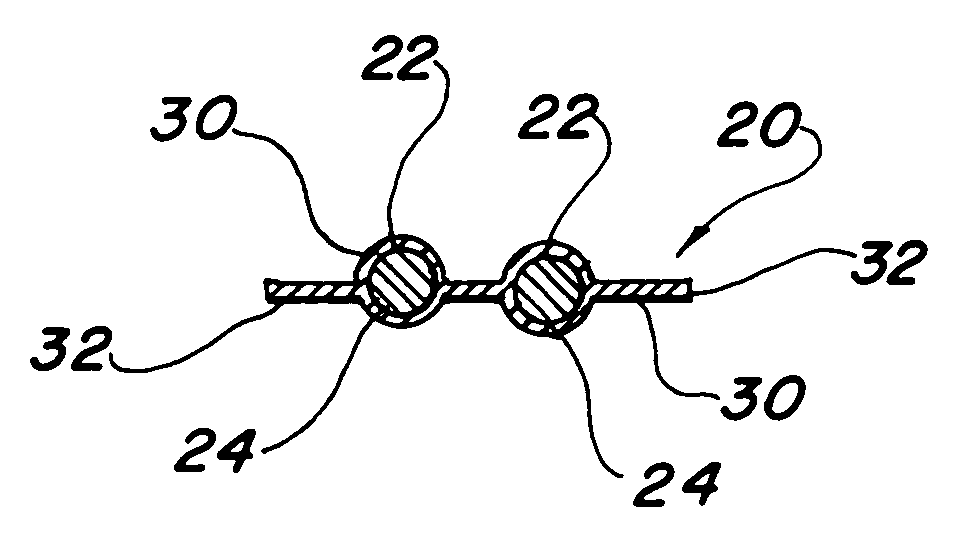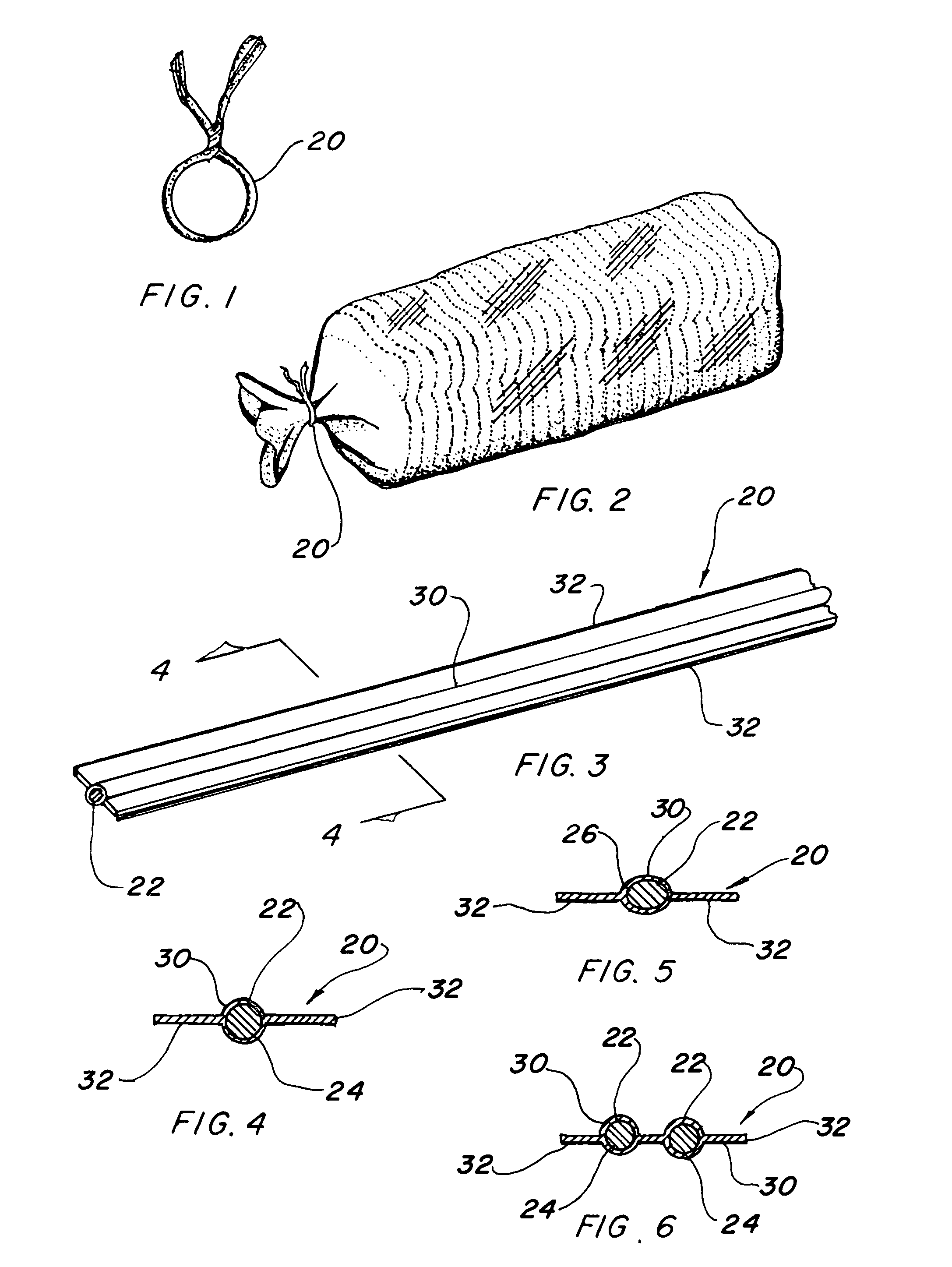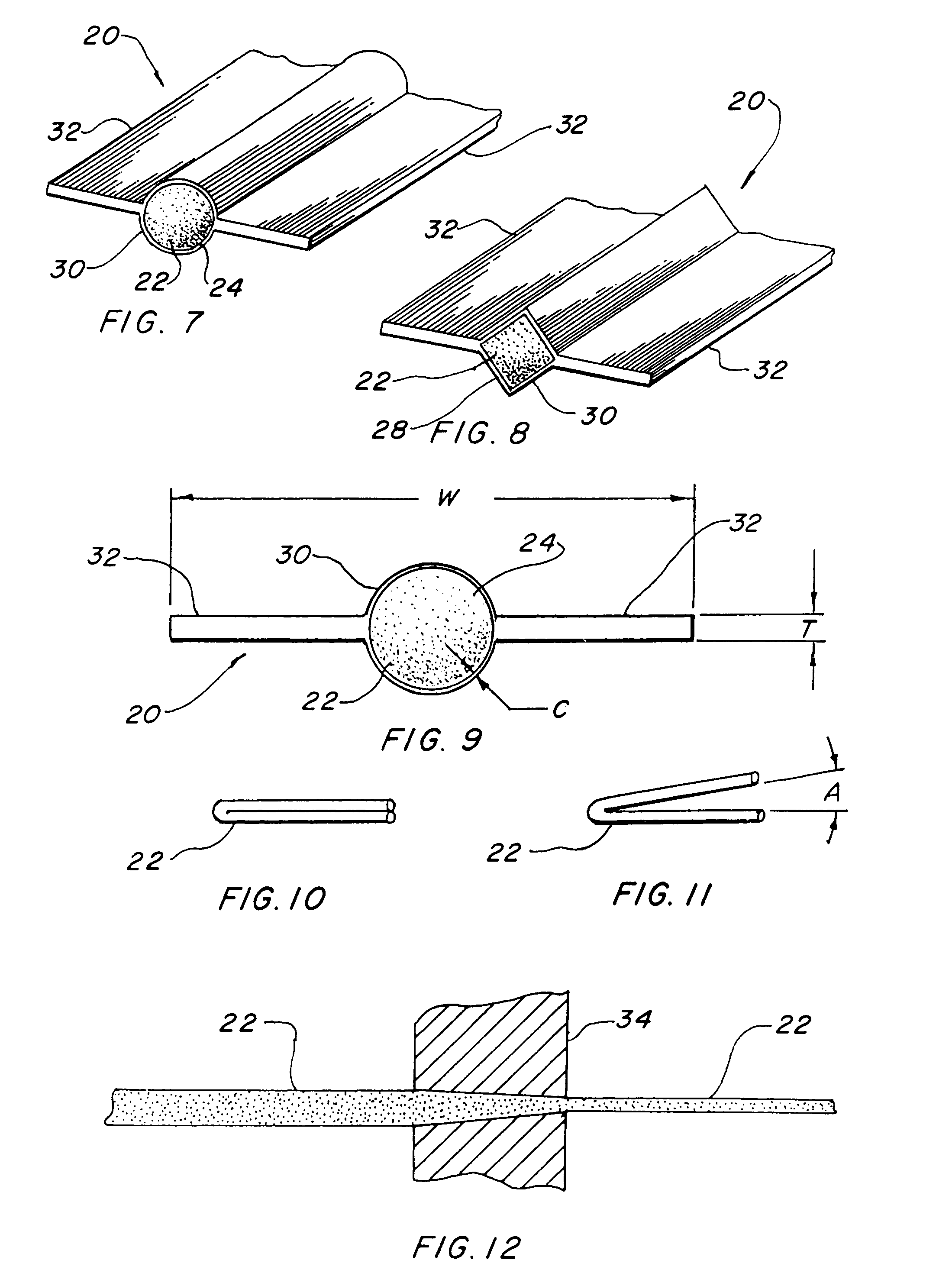Composite polymeric twist tie
- Summary
- Abstract
- Description
- Claims
- Application Information
AI Technical Summary
Benefits of technology
Problems solved by technology
Method used
Image
Examples
Embodiment Construction
[0029]The best mode for carrying out the invention is presented in terms of a preferred embodiment. This preferred embodiment is shown in FIGS. 1 through 11 and is comprised of a composite polymeric twist tie 20 that is preferably formed using an oriented thermoplastic monofilament 22 having an oriented characteristic produced by stretching the preheated monofilament through a heated volume reducing die. Any other suitable method of manufacture can be utilized.
[0030]The oriented thermoplastic monofilament 22 preferably has a round shape 24 with a diameter of from 0.022 to 0.042 inches (0.056 to 0.107 cm) as shown in FIGS. 4, 6, 7 and 9. While this shape is basically conventional, since the prior art wire core it is replacing is round, it is not limited to this configuration as it may be formed with a substantially oval shape 26, as shown in FIG. 5, a substantially square shape 28 illustrated in FIG. 8 or any other external shape and still be within the parameters of this invention. ...
PUM
| Property | Measurement | Unit |
|---|---|---|
| Thickness | aaaaa | aaaaa |
| Thickness | aaaaa | aaaaa |
| Pressure | aaaaa | aaaaa |
Abstract
Description
Claims
Application Information
 Login to View More
Login to View More - R&D Engineer
- R&D Manager
- IP Professional
- Industry Leading Data Capabilities
- Powerful AI technology
- Patent DNA Extraction
Browse by: Latest US Patents, China's latest patents, Technical Efficacy Thesaurus, Application Domain, Technology Topic, Popular Technical Reports.
© 2024 PatSnap. All rights reserved.Legal|Privacy policy|Modern Slavery Act Transparency Statement|Sitemap|About US| Contact US: help@patsnap.com










